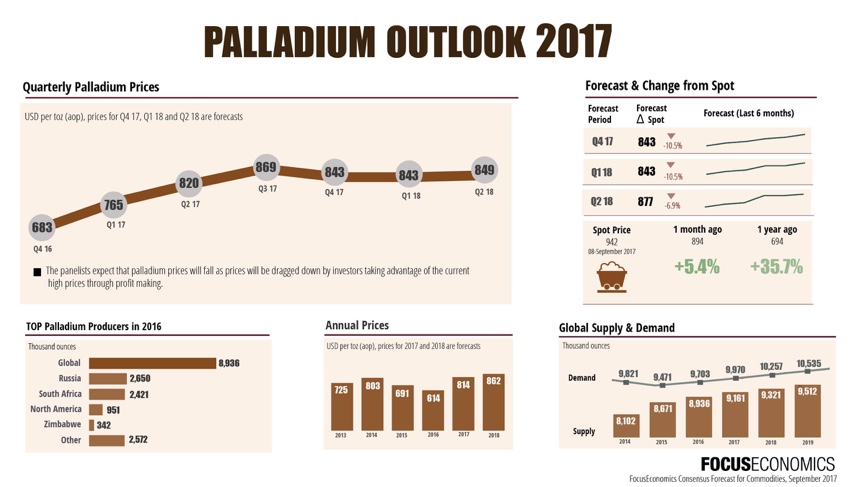
Monday was a bleak day on precious metals markets with the glaring exception of palladium which added more than 1% to $930 an ounce, closing the gap with sister metal platinum to only $30.
At the beginning of the month, palladium futures trading in New York jumped to just shy of $1,000, the highest since 2001.
The metal, mainly used to scrub vehicle emissions, is trading up 37% so far this year on a combination of strong global sales for gasoline vehicles and persistent undersupply.
2016 was the fifth year in a row of substantial deficits (1.2m ounces or 37 tonnes) as production in South Africa continues a painful decline and Russia, which together with the African nation is responsible for more than 70% of global PGM output, navigate sanctions imposed by the West.
Investor speculation has also been a big driver – long positions on palladium futures have risen 60% since the start of 2017, but large-scale investors such as hedge funds last week trimmed their exposure to the metal.
Industrial demand may also not be as strong as investors are hoping for. The premium for palladium sponge (semi-finished metal) over ingots have been stable and recently started to decline.
A note from Capital Economics argues the relatively soft sponge price “suggests that investor buying, rather than strong industrial demand (as proxied by sponge prices), has been the main driver of prices.” Capital Economics expect palladium to end 2017 around $850.
Other market participants share some of the London-based research firm’s bearishness after such a strong run-up in the price. Analysts polled for September’s FocusEconomics Consensus Forecast project that the price will average $843 per troy ounce in Q4 2017.
Next year, panelists see prices rising gradually and expect an average of $877 per troy ounce in Q4 2018. This month, 8 panelists left their forecasts unchanged for Q4 2017 while six raised their forecasts.
